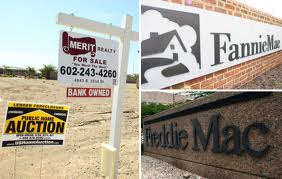 The White House is considering all options with regard to providing relief to troubled homeowners in the United States, and that may include reaching out to borrowers whose mortgages are not guaranteed by government-sponsored entities Fannie Mae and Freddie Mac. This development was first reported by the Wall Street Journal on Christmas, but no formal sources have been named yet.
The White House is considering all options with regard to providing relief to troubled homeowners in the United States, and that may include reaching out to borrowers whose mortgages are not guaranteed by government-sponsored entities Fannie Mae and Freddie Mac. This development was first reported by the Wall Street Journal on Christmas, but no formal sources have been named yet.
Details about the program include borrowers whose home loans are underwater, meaning that the principal and interest of their mortgages is more than the value of their homes. Some housing markets in the United States have seen a reduction in the number of underwater or negative equity homes thanks to the burgeoning recovery of the housing market, but many distressed properties still remain. To lessen the strain on the housing market, Congress could authorize an ambitious program that will seek to refinance even the most hopeless cases and have Fannie and Freddie guarantee the new mortgages.
Improvement in the Mortgage Markets
The proposal to expand the Home Affordable Modification Program (HAMP) actually comes at a good time. Earlier this year, the number of underwater homes in the U.S. was around 10 million. That number was substantially higher at the end of 2011, and it is expected to keep dropping thanks to the ongoing improvement of the real estate market. HAMP has been picking up steam ever since the National Mortgage Foreclosure Settlement Agreement of 2012.
Not all borrowers have been able to qualify for HAMP, however, because their mortgages are held by private investors and lack the loan guarantees provided by Fannie and Freddie. The new proposal would extend HAMP to these borrowers and will direct Fannie and Freddie to increase their fees to guarantee these riskier loans. Should this extension take place, the government would end up holding an interest in the great majority of mortgages in the U.S.
According to the Wall Street Journal, this HAMP extension would be favorable to about five percent of all mortgage borrowers. It has been almost a year since the last time President Obama introduced such an initiative, but the problem last time was that the Federal Housing Administration was ill-prepared to take on such massive risk, at least not without tapping into Treasury funds.



